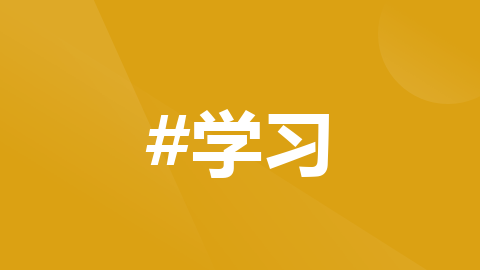【若依】开源框架学习笔记 03 - 过滤器链
文章目录WebAsyncManagerIntegrationFilterSecurityContextPersistenceFilterHeaderWriterFilterCorsFilterLogoutFilterJwtAuthenticationTokenFilterRequestCacheAwareFilterSecurityContextHolderAwareRequestFilterAn
·
文章目录
-
-
-
- WebAsyncManagerIntegrationFilter
- SecurityContextPersistenceFilter
- HeaderWriterFilter
- CorsFilter
- LogoutFilter
- JwtAuthenticationTokenFilter
- RequestCacheAwareFilter
- SecurityContextHolderAwareRequestFilter
- AnonymousAuthenticationFilter
- SessionManagementFilter
- ExceptionTranslationFilter
- FilterSecurityInterceptor
- 参考文献
-
-

- Creating filter chain: any request,
- [
- org.springframework.security.web.context.request.async.WebAsyncManagerIntegrationFilter@72a45b71,
- org.springframework.security.web.context.SecurityContextPersistenceFilter@2f271ae2,
- org.springframework.security.web.header.HeaderWriterFilter@653fbbfc,
- org.springframework.web.filter.CorsFilter@44e08a7a,
- org.springframework.web.filter.CorsFilter@44e08a7a,
- org.springframework.security.web.authentication.logout.LogoutFilter@6f55aef7,
- com.ruoyi.framework.security.filter.JwtAuthenticationTokenFilter@64eeddd8,
- org.springframework.security.web.savedrequest.RequestCacheAwareFilter@632a7680,
- org.springframework.security.web.servletapi.SecurityContextHolderAwareRequestFilter@70720b78,
- org.springframework.security.web.authentication.AnonymousAuthenticationFilter@3eed0375,
- org.springframework.security.web.session.SessionManagementFilter@c925ae1,
- org.springframework.security.web.access.ExceptionTranslationFilter@5c0d876c,
- org.springframework.security.web.access.intercept.FilterSecurityInterceptor@465e9090
- ]

public DefaultSecurityFilterChain(RequestMatcher requestMatcher, List<Filter> filters) {
logger.info("Creating filter chain: " + requestMatcher + ", " + filters);
this.requestMatcher = requestMatcher;
this.filters = new ArrayList<>(filters);
}
WebAsyncManagerIntegrationFilter
private static final Object CALLABLE_INTERCEPTOR_KEY = new Object();
@Override
protected void doFilterInternal(HttpServletRequest request,
HttpServletResponse response, FilterChain filterChain)
throws ServletException, IOException {
// 根据请求封装 WebAsyncManager
WebAsyncManager asyncManager = WebAsyncUtils.getAsyncManager(request);
SecurityContextCallableProcessingInterceptor securityProcessingInterceptor = (SecurityContextCallableProcessingInterceptor) asyncManager
.getCallableInterceptor(CALLABLE_INTERCEPTOR_KEY);
if (securityProcessingInterceptor == null) {
// 注册 SecurityContextCallableProcessingInterceptor
asyncManager.registerCallableInterceptor(CALLABLE_INTERCEPTOR_KEY,
new SecurityContextCallableProcessingInterceptor());
}
filterChain.doFilter(request, response);
}
SecurityContextPersistenceFilter
static final String FILTER_APPLIED = "__spring_security_scpf_applied";
private SecurityContextRepository repo;
private boolean forceEagerSessionCreation = false;
public void doFilter(ServletRequest req, ServletResponse res, FilterChain chain)
throws IOException, ServletException {
HttpServletRequest request = (HttpServletRequest) req;
HttpServletResponse response = (HttpServletResponse) res;
if (request.getAttribute(FILTER_APPLIED) != null) {
// ensure that filter is only applied once per request
// 确保每个请求仅应用一次过滤器
chain.doFilter(request, response);
return;
}
final boolean debug = logger.isDebugEnabled();
request.setAttribute(FILTER_APPLIED, Boolean.TRUE);
if (forceEagerSessionCreation) {
HttpSession session = request.getSession();
if (debug && session.isNew()) {
logger.debug("Eagerly created session: " + session.getId());
}
}
// 用于将传入的请求传递给 SecurityContextRepository.loadContext(HttpRequestResponseHolder),
// 从而允许该方法将请求交换为包装的版本,并返回 SecurityContext 值。
HttpRequestResponseHolder holder = new HttpRequestResponseHolder(request,
response);
SecurityContext contextBeforeChainExecution = repo.loadContext(holder);
try {
SecurityContextHolder.setContext(contextBeforeChainExecution);
chain.doFilter(holder.getRequest(), holder.getResponse());
}
finally {
SecurityContext contextAfterChainExecution = SecurityContextHolder
.getContext();
// Crucial removal of SecurityContextHolder contents - do this before anything
// else.
// 至关重要的是删除 SecurityContextHolder 内容 - 在执行其他任何操作之前先执行此操作。
SecurityContextHolder.clearContext();
repo.saveContext(contextAfterChainExecution, holder.getRequest(),
holder.getResponse());
request.removeAttribute(FILTER_APPLIED);
if (debug) {
// 随着请求处理完成,SecurityContextHolder 现在已清除
logger.debug("SecurityContextHolder now cleared, as request processing completed");
}
}
}
HeaderWriterFilter
/**
* The {@link HeaderWriter} to write headers to the response.
* {@see CompositeHeaderWriter}
*/
private final List<HeaderWriter> headerWriters;
/**
* Indicates whether to write the headers at the beginning of the request.
* 指示是否在请求的开始处写入标头。
*/
private boolean shouldWriteHeadersEagerly = false;
@Override
protected void doFilterInternal(HttpServletRequest request,
HttpServletResponse response, FilterChain filterChain)
throws ServletException, IOException {
if (this.shouldWriteHeadersEagerly) {
doHeadersBefore(request, response, filterChain);
} else {
doHeadersAfter(request, response, filterChain);
}
}
private void doHeadersBefore(HttpServletRequest request, HttpServletResponse response, FilterChain filterChain) throws IOException, ServletException {
writeHeaders(request, response);
filterChain.doFilter(request, response);
}
private void doHeadersAfter(HttpServletRequest request, HttpServletResponse response, FilterChain filterChain) throws IOException, ServletException {
HeaderWriterResponse headerWriterResponse = new HeaderWriterResponse(request,
response);
HeaderWriterRequest headerWriterRequest = new HeaderWriterRequest(request,
headerWriterResponse);
try {
filterChain.doFilter(headerWriterRequest, headerWriterResponse);
} finally {
headerWriterResponse.writeHeaders();
}
}
void writeHeaders(HttpServletRequest request, HttpServletResponse response) {
for(HeaderWriter writer : this.headerWriters) {
writer.writeHeaders(request, response);
}
}
CorsFilter
private final CorsConfigurationSource configSource;
protected void doFilterInternal(HttpServletRequest request, HttpServletResponse response, FilterChain filterChain) throws ServletException, IOException {
CorsConfiguration corsConfiguration = this.configSource.getCorsConfiguration(request);
boolean isValid = this.processor.processRequest(corsConfiguration, request, response);
if (isValid && !CorsUtils.isPreFlightRequest(request)) {
filterChain.doFilter(request, response);
}
}
LogoutFilter
private RequestMatcher logoutRequestMatcher;
private final LogoutHandler handler;
private final LogoutSuccessHandler logoutSuccessHandler;
public void doFilter(ServletRequest req, ServletResponse res, FilterChain chain)
throws IOException, ServletException {
HttpServletRequest request = (HttpServletRequest) req;
HttpServletResponse response = (HttpServletResponse) res;
if (requiresLogout(request, response)) {
Authentication auth = SecurityContextHolder.getContext().getAuthentication();
if (logger.isDebugEnabled()) {
logger.debug("Logging out user '" + auth
+ "' and transferring to logout destination");
}
this.handler.logout(request, response, auth);
logoutSuccessHandler.onLogoutSuccess(request, response, auth);
return;
}
chain.doFilter(request, response);
}
/**
* Allow subclasses to modify when a logout should take place.
* 允许子类在应注销时进行修改。
*
* @param request the request
* @param response the response
*
* @return <code>true</code> if logout should occur, <code>false</code> otherwise
*/
protected boolean requiresLogout(HttpServletRequest request,
HttpServletResponse response) {
return logoutRequestMatcher.matches(request);
}
JwtAuthenticationTokenFilter
@Autowired
private TokenService tokenService;
@Override
protected void doFilterInternal(HttpServletRequest request, HttpServletResponse response, FilterChain chain)
throws ServletException, IOException
{
// 获取用户身份信息
LoginUser loginUser = tokenService.getLoginUser(request);
if (Validator.isNotNull(loginUser) && Validator.isNull(SecurityUtils.getAuthentication()))
{
// 验证令牌有效期,相差不足20分钟,自动刷新缓存
tokenService.verifyToken(loginUser);
UsernamePasswordAuthenticationToken authenticationToken = new UsernamePasswordAuthenticationToken(loginUser, null, loginUser.getAuthorities());
authenticationToken.setDetails(new WebAuthenticationDetailsSource().buildDetails(request));
SecurityContextHolder.getContext().setAuthentication(authenticationToken);
}
chain.doFilter(request, response);
}
RequestCacheAwareFilter
private RequestCache requestCache;
public void doFilter(ServletRequest request, ServletResponse response,
FilterChain chain) throws IOException, ServletException {
// 如果已保存的请求与当前请求匹配,则返回包装器。保存的请求应从缓存中删除。
HttpServletRequest wrappedSavedRequest = requestCache.getMatchingRequest(
(HttpServletRequest) request, (HttpServletResponse) response);
chain.doFilter(wrappedSavedRequest == null ? request : wrappedSavedRequest,
response);
}
SecurityContextHolderAwareRequestFilter
public void doFilter(ServletRequest req, ServletResponse res, FilterChain chain)
throws IOException, ServletException {
// 给定一个 HttpServletRequest 会返回一个 HttpServletRequest,
// 该 HttpServletRequest 在大多数情况下会包装原始 HttpServletRequest。
chain.doFilter(this.requestFactory.create((HttpServletRequest) req,
(HttpServletResponse) res), res);
}
AnonymousAuthenticationFilter
public void doFilter(ServletRequest req, ServletResponse res, FilterChain chain)
throws IOException, ServletException {
if (SecurityContextHolder.getContext().getAuthentication() == null) {
// 更改当前已认证的主体,或删除认证信息。
SecurityContextHolder.getContext().setAuthentication(
createAuthentication((HttpServletRequest) req));
if (logger.isDebugEnabled()) {
// Populated SecurityContextHolder with anonymous token: 'org.springframework.security.authentication.AnonymousAuthenticationToken@6d7e94e2:
// Principal: anonymousUser;
// Credentials: [PROTECTED];
// Authenticated: true;
// Details: org.springframework.security.web.authentication.WebAuthenticationDetails@957e:
// RemoteIpAddress: 127.0.0.1;
// SessionId: null;
// Granted Authorities: ROLE_ANONYMOUS'
logger.debug("Populated SecurityContextHolder with anonymous token: '"
+ SecurityContextHolder.getContext().getAuthentication() + "'");
}
}
else {
if (logger.isDebugEnabled()) {
logger.debug("SecurityContextHolder not populated with anonymous token, as it already contained: '"
+ SecurityContextHolder.getContext().getAuthentication() + "'");
}
}
chain.doFilter(req, res);
}
protected Authentication createAuthentication(HttpServletRequest request) {
AnonymousAuthenticationToken auth = new AnonymousAuthenticationToken(key,
principal, authorities);
auth.setDetails(authenticationDetailsSource.buildDetails(request));
return auth;
}
SessionManagementFilter
static final String FILTER_APPLIED = "__spring_security_session_mgmt_filter_applied";
private final SecurityContextRepository securityContextRepository;
private SessionAuthenticationStrategy sessionAuthenticationStrategy;
private AuthenticationTrustResolver trustResolver = new AuthenticationTrustResolverImpl();
private InvalidSessionStrategy invalidSessionStrategy = null;
private AuthenticationFailureHandler failureHandler = new SimpleUrlAuthenticationFailureHandler();
public void doFilter(ServletRequest req, ServletResponse res, FilterChain chain)
throws IOException, ServletException {
HttpServletRequest request = (HttpServletRequest) req;
HttpServletResponse response = (HttpServletResponse) res;
if (request.getAttribute(FILTER_APPLIED) != null) {
chain.doFilter(request, response);
return;
}
request.setAttribute(FILTER_APPLIED, Boolean.TRUE);
// 允许查询存储库是否包含当前请求的安全上下文。
if (!securityContextRepository.containsContext(request)) {
// 获取当前已认证的主体或认证请求令牌。
Authentication authentication = SecurityContextHolder.getContext()
.getAuthentication();
if (authentication != null && !trustResolver.isAnonymous(authentication)) {
// The user has been authenticated during the current request, so call the
// session strategy
// 用户在当前请求期间已通过身份验证,因此调用会话策略
try {
// 发生新的身份验证时,执行与Http会话相关的功能。
sessionAuthenticationStrategy.onAuthentication(authentication,
request, response);
}
catch (SessionAuthenticationException e) {
// The session strategy can reject the authentication
logger.debug(
"SessionAuthenticationStrategy rejected the authentication object",
e);
SecurityContextHolder.clearContext();
failureHandler.onAuthenticationFailure(request, response, e);
return;
}
// Eagerly save the security context to make it available for any possible
// re-entrant
// requests which may occur before the current request completes.
// SEC-1396.
// 认真保存安全上下文,以使其可用于在当前请求完成之前可能发生的任何可重入请求。 SEC-1396。
securityContextRepository.saveContext(SecurityContextHolder.getContext(),
request, response);
}
else {
// No security context or authentication present. Check for a session
// timeout
if (request.getRequestedSessionId() != null
&& !request.isRequestedSessionIdValid()) {
if (logger.isDebugEnabled()) {
logger.debug("Requested session ID "
+ request.getRequestedSessionId() + " is invalid.");
}
if (invalidSessionStrategy != null) {
invalidSessionStrategy
.onInvalidSessionDetected(request, response);
return;
}
}
}
}
chain.doFilter(request, response);
}
ExceptionTranslationFilter
private ThrowableAnalyzer throwableAnalyzer = new DefaultThrowableAnalyzer();
public void doFilter(ServletRequest req, ServletResponse res, FilterChain chain)
throws IOException, ServletException {
HttpServletRequest request = (HttpServletRequest) req;
HttpServletResponse response = (HttpServletResponse) res;
try {
chain.doFilter(request, response);
logger.debug("Chain processed normally");
}
catch (IOException ex) {
throw ex;
}
catch (Exception ex) {
// Try to extract a SpringSecurityException from the stacktrace
// 尝试从 stacktrace 中提取 SpringSecurityException
Throwable[] causeChain = throwableAnalyzer.determineCauseChain(ex);
// 从传入的数组中返回可分配给所提供类型的第一个throwable。
// 返回的实例可以安全地强制转换为指定的类型。
// 如果传入的数组为null或为空,则此方法返回null。
RuntimeException ase = (AuthenticationException) throwableAnalyzer
.getFirstThrowableOfType(AuthenticationException.class, causeChain);
if (ase == null) {
ase = (AccessDeniedException) throwableAnalyzer.getFirstThrowableOfType(
AccessDeniedException.class, causeChain);
}
if (ase != null) {
if (response.isCommitted()) {
throw new ServletException("Unable to handle the Spring Security Exception because the response is already committed.", ex);
}
handleSpringSecurityException(request, response, chain, ase);
}
else {
// Rethrow ServletExceptions and RuntimeExceptions as-is
// 照原样扔回 ServletException 和 RuntimeException
if (ex instanceof ServletException) {
throw (ServletException) ex;
}
else if (ex instanceof RuntimeException) {
throw (RuntimeException) ex;
}
// Wrap other Exceptions. This shouldn't actually happen
// as we've already covered all the possibilities for doFilter
// 包装其他异常。
// 实际上,这应该不应该发生,因为我们已经介绍了doFilter的所有可能性
throw new RuntimeException(ex);
}
}
}
FilterSecurityInterceptor
private static final String FILTER_APPLIED = "__spring_security_filterSecurityInterceptor_filterApplied";
private boolean observeOncePerRequest = true;
/**
* Method that is actually called by the filter chain. Simply delegates to the
* {@link #invoke(FilterInvocation)} method.
* 筛选器链实际调用的方法。只需委托给 {@link #invoke(FilterInvocation)}方法即可。
*
* @param request the servlet request
* @param response the servlet response
* @param chain the filter chain
*
* @throws IOException if the filter chain fails
* @throws ServletException if the filter chain fails
*/
public void doFilter(ServletRequest request, ServletResponse response,
FilterChain chain) throws IOException, ServletException {
FilterInvocation fi = new FilterInvocation(request, response, chain);
invoke(fi);
}
public void invoke(FilterInvocation fi) throws IOException, ServletException {
if ((fi.getRequest() != null)
&& (fi.getRequest().getAttribute(FILTER_APPLIED) != null)
&& observeOncePerRequest) {
// filter already applied to this request and user wants us to observe
// once-per-request handling, so don't re-do security checking
// 已应用于此请求的过滤器,用户希望我们遵守每个请求一次的处理,因此请勿重新进行安全检查
fi.getChain().doFilter(fi.getRequest(), fi.getResponse());
}
else {
// first time this request being called, so perform security checking
// 第一次调用此请求,因此请执行安全检查
if (fi.getRequest() != null && observeOncePerRequest) {
fi.getRequest().setAttribute(FILTER_APPLIED, Boolean.TRUE);
}
InterceptorStatusToken token = super.beforeInvocation(fi);
try {
fi.getChain().doFilter(fi.getRequest(), fi.getResponse());
}
finally {
// 安全对象调用完成后,清理 AbstractSecurityInterceptor 的工作。
// 无论安全对象调用是否成功返回,都应在安全对象调用之后和 afterInvocation 之前调用此方法(即应在finally块中完成)。
super.finallyInvocation(token);
}
// 安全对象调用完成后,完成 AbstractSecurityInterceptor 的工作。
super.afterInvocation(token, null);
}
}
参考文献
更多推荐
 已为社区贡献79条内容
已为社区贡献79条内容










所有评论(0)